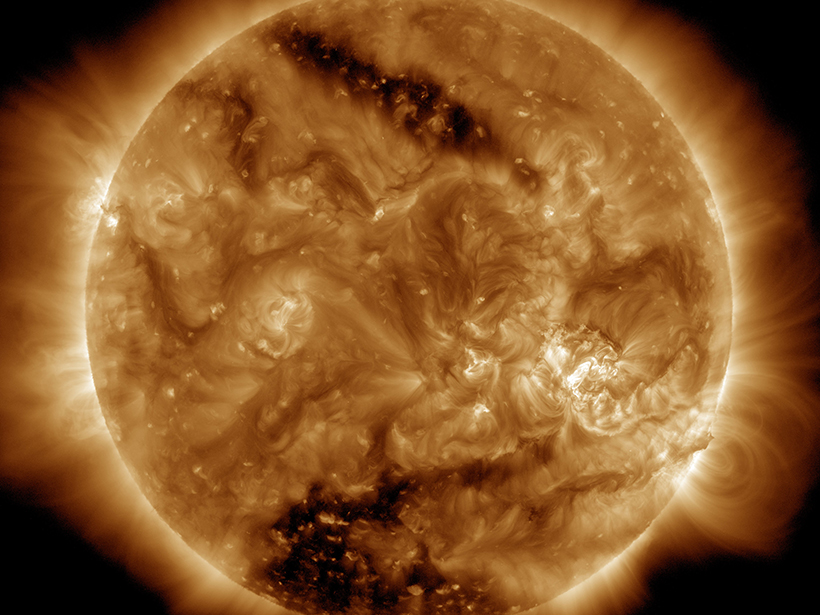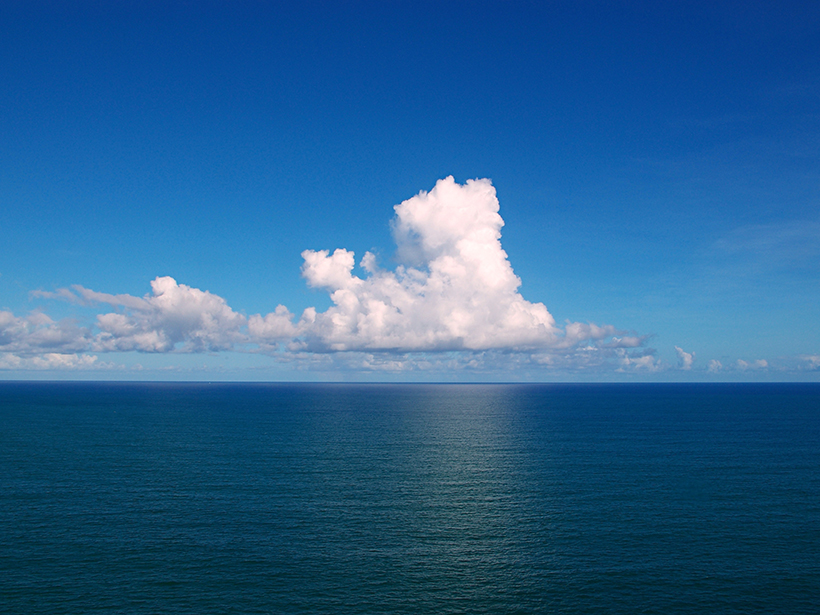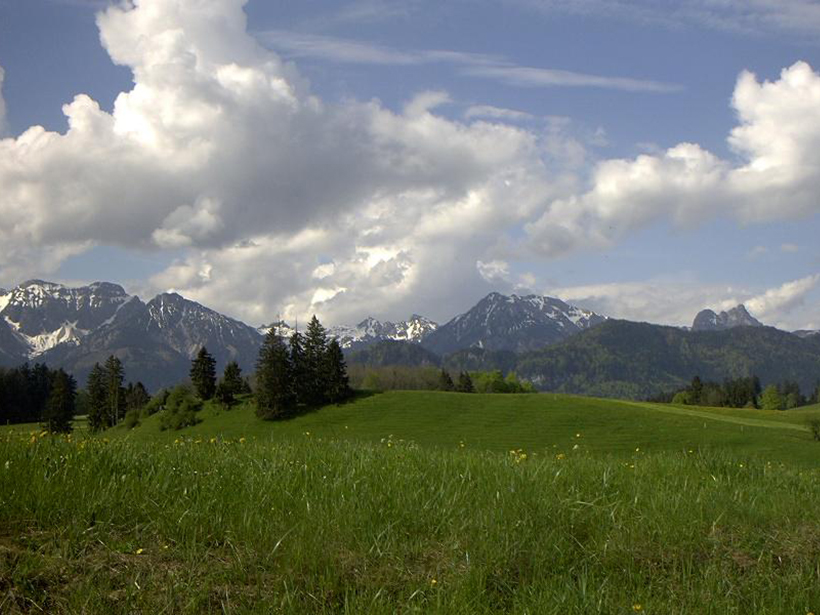Seismic waves produced by free-falling meltwater could improve understanding of glacial drainage processes.
Research Spotlights
Research spotlights are plain-language summaries of recent articles published in AGU’s suite of 24 journals.
Incorporating 3-D Cloud Effects into Weather and Climate Models
Researchers explain how a new radiative scheme can be incorporated into global weather and climate models to better capture the effect of clouds on climate.
How Do Gullies Form on Mars?
New orbiter data support an important role for seasonal frost—not liquid water—in the formation of Martian gullies.
Spotting the Source of Slow Solar Wind
A new study suggests that magnetic reconnection may fuel slow solar winds, which top out at speeds below 500 kilometers per second.
How Sea Surface Temperatures Affect an Atmospheric Phenomenon
New research sheds light on the complex interplay between the atmosphere and the ocean and how both affect the Madden-Julian Oscillation.
Scientists Map Temperature and Density in Earth’s Exosphere
Data from multiple orbiters give a clearer picture of how density and temperature interact and what that could mean for future satellite missions.
Deciphering the Bay of Bengal's Tectonic Origins
New magnetic and gravity data suggest that the boundary between continental and oceanic crust lies beneath northern Bangladesh, along the line of an Early Cretaceous spreading center.
Forecasting Space Weather Like Earth Weather
Researchers find that as with terrestrial weather, ensemble forecasting—which uses several different models simultaneously—is the best way to produce accurate and precise forecasts of space weather.
Headwater Streams May Export More Carbon Than Previously Thought
New research sheds light on the streams that carry carbon away from peatlands with the hope that the data will better inform climate models.
Characterizing the Faults Beneath Germany
A team of researchers has described how the faults within the German Alpine Molasse Basin initially developed.








